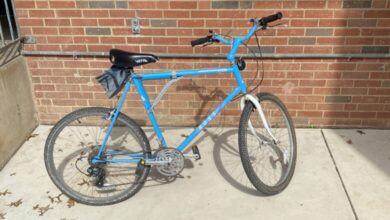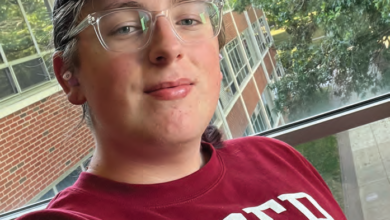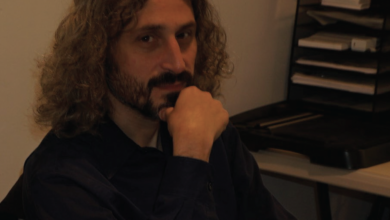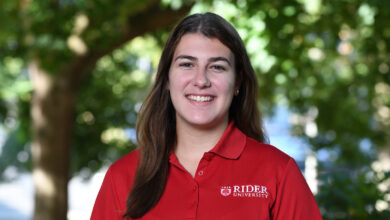COVID-19: testing and contact tracing confusions
By Kaitlyn McCormick
As temperatures drop and cold and flu season rolls through Rider’s campus, more students are feeling under the weather, revealing confusion and concern surrounding COVID-19 testing and contact tracing protocols on campus.
Even though some students have become concerned after not qualifying for on-campus testing, Co-chair of Rider’s COVID-19 Implementation Team Debbie Stasolla said that the university’s procedures are following Center for Disease Control and Prevention guidelines.
“It takes a while for the virus to incubate. It’s not going to be necessarily detected right away, or be of enough load within your system to be detected by testing, so that’s why … it doesn’t always make sense for someone to get tested just because they know someone who has been in contact,” Stasolla said.
According to the CDC, fully vaccinated people should be tested five to seven days after exposure. Testing prior to this post-exposure window, Stasolla said, “may very well be meaningless.”
Despite Rider’s adherence to CDC guidance, students are still worried about testing procedures, especially as more close contacts are popping up around them and they cannot freely request a test.
Student concerns
Sophomore arts management major Rachel Siegerman was determined as a close contact to someone who tested positive for COVID this month, which worried her suitemates who were technically unable to be tested on campus.
“They turned away the rest of our roommates because they’re not really close contact … we all share the same space,” Siegerman said.
Stasolla said that while the on-campus testing center is focusing its time and resources on close contact and symptomatic students, in addition to weekly surveillance testing for unvaccinated students, testing is still available at off-campus locations.
Siegerman said, “Being vaccinated doesn’t mean we’re invincible.”
Faculty involvement in contact tracing
Rider relies on its internal team of contact tracers to track COVID exposures on campus, and although this is useful, it’s surprising that the university is not consistently utilizing one of its strongest resources: its teaching faculty.
“We do have to rely on the positive person to remember who they were in contact with during their infectious period. … If they don’t have confidence about who they may have been near, then we will reach out to faculty or any other individuals,” Stasolla said. “It can sometimes be fuzzy.”
Automatically diverting to faculty for a reference point for contact tracing would add another layer of security and accuracy, especially in classes without a typical seating structure.
Department of communication, journalism and media professor Cynthia Vieth described the various seating and group work structures for her students.
Vieth said, “I teach small group communication, and we’ll break up into smaller groups and go to different parts of the room … so that person might be assigned to somebody who sat clear across the other side of the room. … So I really think the most direct line to ‘who did a particular student have contact with within the last, you know, week’ would be best identified by the professor.”
Unless designated as a close contact, faculty aren’t even explicitly notified if a student in their class tests positive, which has garnered justifiable concern.
Stasolla said, “I can understand that there are some faculty who feel like anytime they have a COVID positive student in their class, they should be notified. That’s not how contact tracing works.”
And while the university wants to maintain student privacy to the best of their ability, it’s admittedly not hard for professors to parse out what absences may be due to the virus.
Vieth said, “If in the body of the email it says that the student won’t be back for 10 days or two weeks or what have you, I kind of deduce that it’s a COVID positive situation.”
Alleviating a complex problem
There is room for change to be made on all fronts when it comes to understanding and implementing COVID-19 testing and contact tracing procedures. Rider needs to be clearer with its students regarding Resolved and Ready protocols. Siegerman shared this viewpoint. “I always think there could be more communication. … I think they [Rider] really lack getting information to their students,” she said.
Although testing is available for worried students off campus, there may still be an issue of transportation for students who either don’t have a license or access to a vehicle on campus. While Stasolla recommends the campus shuttle, perhaps this is one more area where an explicit exception could be made in the testing protocol.
For contact tracing especially, the room for human error is so large that more directly involving faculty would be the first step in mediating what Stasolla admits is a “fuzzy” process.
It is understandable that student privacy is important, but in a matter of public health, utilizing faculty as a second point of verification may make the contact tracing process more accurate.
Vieth said, “Being candid with the professors and then having the … professionalism to not talk about a student’s personal case, that’s probably a more direct way to handle it.”
Making a stronger effort in effectively communicating and seeking out university COVID-19 protocols, on both the administrative and student sides, as well as seriously considering improvements to the current contact tracing procedures are the key facets of bettering Rider’s overall response to COVID.



